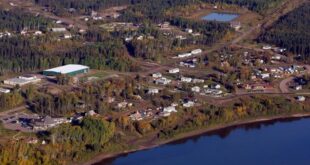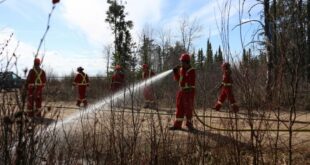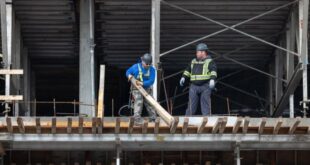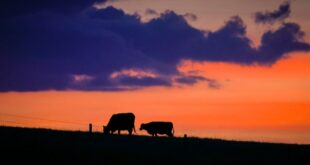Indigenous history is rooted in the Niagara Region on both sides of the border


This week we’re taking you to Niagara Falls for the second installment of our occasional series Unmapped. Rosanna is unmapping Niagara Falls, aka Onguiaahra – from the Haudenosaunee contributions to the War of 1812 to the Tuscarora women keeping their culture and traditions alive through beading, there is much more to know beyond the iconic waterfall.
For Rick Hill, the rainbows created by the swirling mists of Niagara Falls made it a natural place for storytelling to be born.
"There's something very seductive about it," he said. "There is something that almost makes you want to jump in."
Hill is a Tuscarora Elder who grew up in Grand Island, N.Y., just over 11 kilometres southeast of Niagara Falls.
Niagara Falls is one of the most popular tourist destinations in North America, bringing thousands of people to the region to marvel at the massive waterfalls that give the area its namesake.
But there is a rich history of Indigenous life and a story that Indigenous people are working to make sure is recognized by visitors and remembered by future generations because Niagara Falls is more than tourist traps and honeymooners, they say.
One story that stuck with Hill was the Maid of the Mist, which is also the namesake for a fleet of double-decker boats that brings tourists from around the world right up to the falls. In this story, it was said that a beautiful maiden was sacrificed by Haudenosaunee people to the spirit of the falls.
But Hill had doubts about the story because Haudenosaunee held women in high regard as powerful matriarchs and bearers of life.
"It just didn't make sense knowing the nature of our people and how we feel about the sacredness of life," he said.
"We have ceremonies to take care of both the positive and negative forces of life and human sacrifice was not part of our tradition."
He set out to find out the real story of the Maid of the Mist, which led him to Seneca Chief Corbett Sundown.
Dismantling Maid of the Mist myth
WATCH | The story of the Maid of the Mist as told by elders

The Seneca legend of the Maid of the Mist and the Thunder Beings
3 days ago
Niagara Falls is known as a popular tourist destination and the Maid of the Mist is one of the stories that brings a sense of mystique to the area. One version of the story speaks about a maiden being sacrificed to the spirit of the falls. To Tuscarora Elder Rick Hill, this story didn't make sense, and so he set out to find the original story, as told by the elders of his community.
According to Chief Sundown, there was a maiden, but she wasn't sacrificed to the falls. Rather, she had become depressed after falling asleep at the foot of the falls when a snake slithered up inside of her. As a result, a number of men she tried to marry were bitten by the snake and died, he told Hill.
She then went over the falls in a canoe, but was rescued and cured by the Thunder Beings who lived behind the falls.
"I began to realize it's almost like there's a parallel world to how I existed, and that parallel world has that old ancestral knowledge," said Hill.
Searching for the story behind the Maid of the Mist was part of Hill's own journey to understand himself better as a Haudenosaunee person.
"I wanted to know what is our relationship to that because I had to believe there's something more to this [life than] making money."
Since then, Hill said he has reclaimed over 700 stories within the region that are rooted within that ancestral knowledge.
"Part of that now is dismantling the harm that these myths and stereotypes have done," he said.
"We have to be the living example of what's right."
Honouring Indigenous history in Niagara Falls
Tim Johnson has been working for years to change public perception of Indigenous people and history in Niagara Falls.
Johnson, the senior adviser to the heritage and legacy group at the Niagara Parks Commission, is behind a number of public art memorials that acknowledge the contributions of First Nations people in the area.
One of those memorials is the Landscape of Nations Memorial, which can be found at Queenston Heights Park, the site of the battle of Queenston Heights that took place during the War of 1812.
"This is a part of history that has been underrepresented for many years," said Johnson, who is Mohawk from Six Nations, Ont.
The memorial is a sprawling interactive art installation that weaves together Haudenosaunee knowledge and historical accounts of the important battle that shaped the birth of Canada as a country.
Queenston Heights was an important site during the war because it's the high ground of the area.
"Of course a big part of the story is that the arrival of Indigenous forces joining that battle turned the tide of the battle towards victory for Great Britain and the Allies," said Johnson.
"This is not just a history lesson for Niagara," he said. "It's a history lesson for the entire country."
Family legacy
Haudenosaunee people put in their service to the British and the U.S. during the War of 1812. After the war, on the U.S. side of the border, Col. Peter Porter granted Tuscarora families the license to set up shop and sell their wares to tourists for their contributions.
Rosemary Hill spent much of her childhood beading and helping the women in her family create birds, flowers and little bags to sell to tourists visiting the area. Now she's making sure that she passes on the Tuscarora style of raised beadwork because it is a connection to who she is as a Tuscarora person.
"I know the beadwork means a lot to all the Tuscaroras, especially Tuscarora women because their past mothers and grandmothers have fought for it, too," she said.
For generations, Tuscarora families set up tables and booths on the U.S. side of the falls to sell their beaded trinkets known as whimsies.
But the construction of the Robert Moses Parkway in the early 1960s — now known as the Niagara Scenic Parkway — created a challenge for the women looking to sell their goods.
"They made us park on the streets and if we weren't out of there a certain time, they'd give us tickets." Hill said it always seemed like there was something happening to deter the women from setting up shop.
"I know when I was 12, that was when we had to run across the Robert Moses four lanes there and four lanes back."
Eventually with the introduction of a lottery for permits to sell, Hill said the beadwork slowly started to die off as fewer people were able to sell. That's why it's even more important for her to continue to teach her grandchildren and great-grandchildren the Tuscarora style of raised beadwork so that Indigenous legacy and connection to Niagara Falls remains intact.
"They need to preserve their heritage in some way," she said. "To keep it and save it for generations after generations. That's where the importance is."
This story is part of a travel series from Unreserved called Unmapped. The series invites us to look for the Indigenous presence in some of the most iconic travel destinations around the world. Meet the people who are nurturing community and raising the visibility of Indigenous pasts, presents and futures.
ABOUT THE AUTHOR
Rhiannon Johnson is an Anishinaabe journalist from Hiawatha First Nation based in Toronto. She has been with CBC since 2017 focusing on Indigenous life and experiences and is currently working with Unreserved with Rosanna Deerchild.
*****
Credit belongs to : www.cbc.ca
 MaharlikaNews | Canada Leading Online Filipino Newspaper Portal The No. 1 most engaged information website for Filipino – Canadian in Canada. MaharlikaNews.com received almost a quarter a million visitors in 2020.
MaharlikaNews | Canada Leading Online Filipino Newspaper Portal The No. 1 most engaged information website for Filipino – Canadian in Canada. MaharlikaNews.com received almost a quarter a million visitors in 2020.






